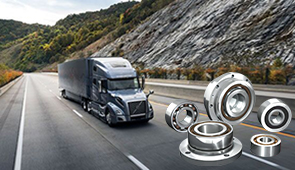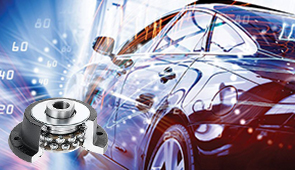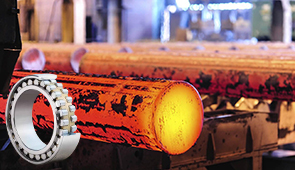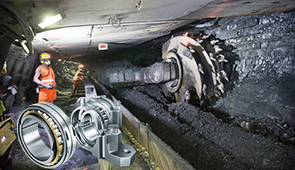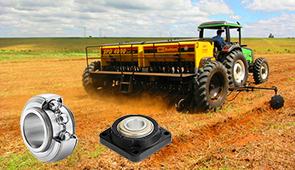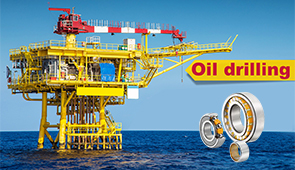Understanding Miniature Ball Bearings: Small Wonders of Precision Engineering
Miniature ball bearings are a critical component of countless modern devices, enabling smooth and efficient motion in compact spaces. From precision medical instruments to advanced robotics and consumer electronics, these small yet powerful components serve as the unsung heroes of engineering, ensuring reliability and performance where size and accuracy are paramount. This article dives deep into the world of miniature ball bearings, exploring their design, functionality, and the vital role they play in high-precision applications. Whether you are an engineer seeking technical insights or simply curious about the marvels of modern mechanics, this comprehensive guide will provide a clear understanding of why these components are indispensable in today’s technology-driven world.
What is a Miniature Ball Bearing?
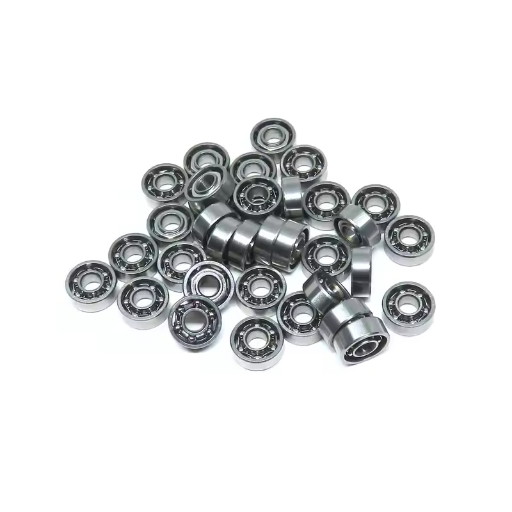
How do Miniature Bearings Work?
Miniature ball bearings work under the principle of rolling wheels and reduce the friction of moving parts. It is made up of an inner ring and outer ring, a set of balls, and a cage to separate the balls. Upon applying load, the balls will rotate in the inner and outer rings which will change the friction to rolling friction that requires less energy.
Every component is manufactured to the highest level of precision which ensures smooth rotation. High speeds and heavy loads. Newer materials like stainless steel and ceramics are utilized for the for the balls and raceways because they have high durability, low wear, and high resistance to corrosion and heat. Special lubricants with grease and oil are also important because they further reduce friction and wear.
The industries spanning from aerospace to robotics, and even medical devices, rely on the functionality and design of Miniature ball bearings due to the precision at which they operate. Take high-speed dental drills, for example, the bearings enable effortless rotation functions above 400,000 RPM (Rotations Per Minute) while maintaining pinpoint accuracy and rock-steady balance. These ball bearings are designed for reliable operation and performance in harsh environments and achieve unquestionable results in energy loss and noise. This is why they are deemed an essential component for high-precision devices.
Key Components of a Miniature Ball Bearing
A miniature ball bearing is made from several intricate parts that allow it to work properly. These parts are:
- Inner and Outer Rings: The inner and outer rings serve as the two principal surfaces that carry the load. These rings, which are usually made from stainless steel or chrome steel, are ground to very exact specifications so to ensure that there are no gaps in the servicing sequence and, hence, orderly succession rotation.
- Balls: There are also steel or ceramic balls which act as the rolling elements and are set between the two rings – inner and outer. Because they are of uniform size and have smooth surface, they can operate at high speeds with minimal energy loss.
- Retainer (Cage): Advanced materials such as polyamide or even metal that offer greater strength and resistance to heat are used in making retainer or cage. The retainer or cage serves the function of spacing uniformly to the balls so that they do not hit each other, preventing contact and thereby ensuring even distribution of load.
- Shield or Seal: These parts help to stop dust, dirt and moisture from getting into the bearing. There are different types of seals including rubber or polymer which not only offer greater protection but can also keep grease, allowing the bearing to last longer.
- Lubricant: Extreme measures of lubricants are decided based on requirements specific to an application, for example, extremely low temperatures or high speed operations. Lubrication is generally in form of grease or oil and is used to reduce friction and wear between surfaces that contact with each other.
These elements operate seamlessly to allow miniature ball bearings to have high efficiency and low friction while maintaining reliable operation even in difficult conditions. Modern technological systems prepare each part of the miniature ball bearings to guarantee their use in demanding industrial applications.
Differences Between Miniature and Standard Bearings
The applications of miniature bearings and standard bearings may overlap, but they fundamentally differ in terms of size, load capacity, and range of application. Most miniature bearings are characterized by a small bore size—usually less than 10 millimeters—and a low profile, which makes them suitable for use in space-sensitive applications such as medical equipment, robotics, and precision instruments. In contrast, standard bearings are larger, meant to handle more demanding workloads, and are used in more challenging settings, including automotive systems and industrial machinery.
Due to their small size, miniature bearings have a limited load-carrying capacity. However, they are designed to provide high precision and very little friction. Standard bearings are more suitable for heavy-duty applications due to their large raceways, rolling elements, and ability to tolerate greater misalignment. Additionally, the materials used to manufacture both types of bearings often differ. For instance, miniature bearings are generally made from corrosion-resistant stainless steel or specialty alloys, which makes them ideal for use in miniature spaces, while standard bearings tend to be constructed from stronger chrome steel or ceramic composites, depending on the application.
Differences in manufacturing bearings also refinine other types of bearings. For high-speed low vibration vibrations, precise machining is mandatory for miniature bearings whereas standard bearings are more concerned with lifespan and resiliency in changing operating environments.
What Materials are Used in Steel Miniature Bearings?

The Role of Chrome Steel in Miniature Bearings
Because of its unmatched hardness, wear resistance, and fatigue life, AISI 52100 or its equivalents stand out as the most common bearing steel for manufacturing miniature bearings—a chrome steel alloy. To achieve optimal performance in elevated stress and demanding conditions, this high-chromium, high-carbon alloy steel undergoes a series of intense treatment processes that include quenching and tempering.
Chrome steel’s ability to withstand deformation or excessive surface wear is critical in applications with high RPMs or sustained loads. Maintaining dimensional accuracy throughout the chrome steel component’s operating lifespan is important, but the consistency of its performance and high precision over the life of the component is unparalleled.
Chrome steel withstands sustained stress better than most materials, but exposing it to cyclic stress can lead to structural cracks; however, these bearings endure great amounts of cyclic stress and are great for robotics, medical devices, or aerospace systems. Furthermore, chrome steel bearings have excellent friction properties which enhances their reliability in precision applications.
Chrome steel, however, is prone to rust in humid or chemically aggressive surroundings. This often requires proper lubrication and, if need be, protective coatings or seals. With the appropriate lubrication, the chances of corrosion can be reduced significantly while still allowing for optimal performance throughout the bearing’s life cycle.
Advantages of Stainless Steel in Bearings
Due to their chromium content, stainless steel bearings are remarkably resistant to corrosion, making them the perfect choice for high maintenance environments with moisture, salt spray, or chemical agents. Their astounding superiority in high-stress, harsh conditions is attributed to the passive oxide layer formed on the surface which protects the material from oxidization. Furthermore, certain grades, like AISI 440C, can operate efficiently at -80°F to 450°F (-62°C to 232°C), showcasing stainless steel’s resistance to extreme temperatures.
One major advantage is their low maintenance requirements due to the reduced need for lubrication and coatings caused by the corrosion resistance of the stainless steel. This alone helps lower the overall cost of ownership. In addition to this, the stainless steel bearings excel in load-bearing capacity, wear resistance, and corrosion resistance, which makes them suitable for food processing, medical devices, and marine applications.
Last but not least, stainless steel bearings comply with hygiene standards in the pharmaceuticals and electronics manufacturing sectors. The remarkable mechanical strength and reliable anti-corrosion protection augment service life and operational performance in specialized applications.
What are the Applications of Miniature Ball Bearings?
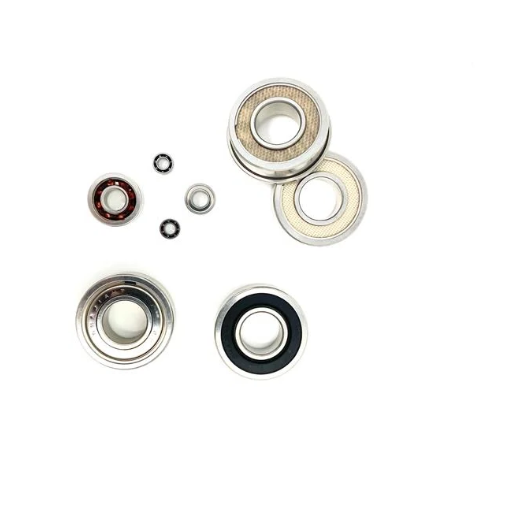
Use in Precision Instruments
Each precision bearing uses miniature ball bearings due to their small size and high sufficiency, ensuring these instruments operate with maximum efficiency. Some of the advanced instruments that use these ball bearings include medical diagnostic devices, aerospace navigation aides, and high-speed dental drills.
To ensure consistent performance in highly precision aware operations where equipment is at risk of catastrophic failure, miniature ball bearings need to have low friction levels. By reducing energy loss and minimizing excess heat generated, the bearings are kept cool which in turn reduces wear. Further, the use of moisture-chemical resistant materials such as hybrid ceramics increases the service life, making these bearings more adaptable to hostile environments.
For hyper-sensitive devices, these specific types of bearings are essential. Their accuracy at high speed enables effective control of motion, resulting in enhanced service life without sacrificing measurement sufficiency. These characteristics show why miniature ball bearings are vital to precision instruments, showcasing the value they provide to high-tech sectors.
Role in Motors and Machinery
Bearings are vital in motors and other machinery as they reduce friction between the moving parts to an optimal level, preventing inefficient energy transfers and wear over time. Bearings are imperative in improving the performance and longevity of mechanical systems. For instance, in electric motors, modern precision bearings minimize mechanical losses which increases the motor’s capacity for rotational speed and energy efficiency. Such features are helpful for both industrial and household motors.
Ball and roller bearings or rolling element bearings have also become some of the most popular types of bearings because of their ability to bear both radial and axial loads. They are made from advanced materials such as ceramic or coated steel which improves heat tolerances and decreases the weight. Research suggests that these modern bearings can outlast some traditional counterparts by up to 50% in high-speed environments.
The bearing technology for machinery has also taken into account modern sustainability concerns. The design of low-friction bearings helps reduce energy use, making the systems more eco-friendly, and advancements in lubrication systems reduce the need for maintenance. These bearing innovations make them crucial for modern motors and machinery as they enable increased multi-industry efficiency.
How to Maintain and Care for Miniature Bearings?
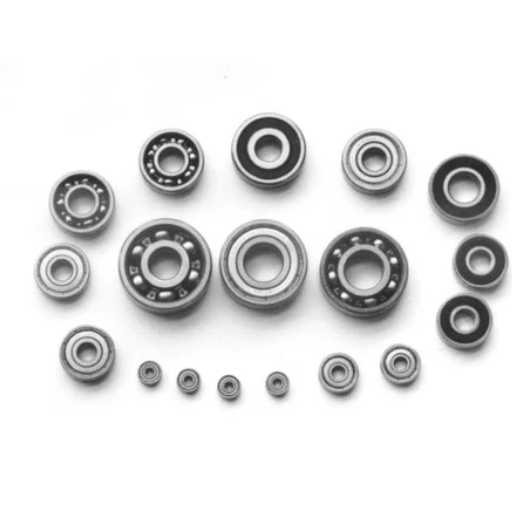
Proper Lubrication Techniques
The performance and lifecycle of these miniature bearings, found in high-precision items such as medical devices, robotics, and aerospace technologies, is especially sensitive to microlubrication, and so is using the right lubricant based on factors like operational temperature, load bearing capacity, and rotational velocity to ensure minimal friction and wear, vibration damping, and preventing harmful particles from entering the bearing system.
To guarantee optimal performance, adhere to the manufacturer’s set policies about the oil or grease used, as even the highest quality lubricants will fail to achieve baseline performance without proper adherence. This is doubly true for miniature bearings, as grease is favored due to lower leakage and longer lubrication times. As with any bearing, the grease application process must use the precise dosage or else friction and overheating become a concern, and for miniature bearings lean further into the high-speed and high-temperature categories—specialized synthetic oils with greater thermal stability may be essential.
Automated lubrication systems paired with manual application methods allow for precision without the contaminant risks associated with improper lubricant storage. Keeping the lubricant clean and dry is one thing, but ensuring unwanted moisture ingress is equally as important for optimal performance. As discussed, precision crafting will vastly improve the operational efficiency and service life of these miniature bearings, alongside proper upkeep of standard lubrication cycles.
Identifying Wear and Tear in Bearings
Checking for signs of damage on bearings is essential for avoiding breakdowns within systems and ensuring smooth operations. Some typical indicators of bearing damage include: odd sounds (grinding, squealing), system vibrations, and higher operating temperatures. Increasingly severe overheating is usually caused by inadequate lubrication or contamination together with misalignment.
Monitoring these issues requires more sophisticated methods such as vibration analysis and thermographic inspections. For example, vibration analysis can pinpoint specifc fault bearing frequencies including: outer race, inner race, or rolling element defects. Burns which result from improper lubrication or friction are identified through thermal imaging. Bearing systems that operate above their suggested temperature range tend to lose up to 50% of their expected life.
Regular maintenance schedules that incorporate condition monitoring alongside routine checks lessen chances of failure. The use of new technologies like acoustic emission sensors, combined with condition monitoring software, makes assessment highly precise and boosts system reliability and operational efficiency.
Cleaning and Maintenance Tips
- Scheduled Bearing Maintenance: In order to maintain proper bearing performance, cleaning should be carried out to eliminate contaminants such as dust, dirt, and grease accumulation. Industrial solvents are recommended for the thorough cleaning of components without damage. For parts reassembly, ensure all cleaned components are dried to guard against corrosion caused by moisture.
- Bearing Lubrication Maintenance: Proper lubrication is vital in managing friction and wear. Select lubricants specific to the bearing materials. Partners with bearing operating conditions should also be considered. Follow recommended relubrication intervals, as too much or too little will lead to system failure and inadequacies.
- Visual, Vibration, and Noise Analysis: In addition to visual inspections for wear, overheating, and corrosion, listen for abnormal noises or vibrations. Unusual activities capture earl and prompt corrective action, preventing unplanned downtime.
- Torque and Alignment Checks: Monitor bearing torque levels as inadequately maintained levels lead to bearing overload and premature wear. Misalignment of bearings is another cause for excessive wear as stress distribution is uneven. Verify use of precision hand tools and laser alignment systems are effective for installation and alignment.
- Temperature Monitoring: Operational temperatures are important in analysis for bearing health. Place temperature sensors where change is tracked. Excessive heat is a sign of lubrication failure or excessive load which in turn can cause damage.
Following these approaches to cleaning and maintenance will prolong the life of bearings, reduce expensive repairs, and strengthen the performance of the machine.
What are the Differences Between Shielded and Sealed Bearings?
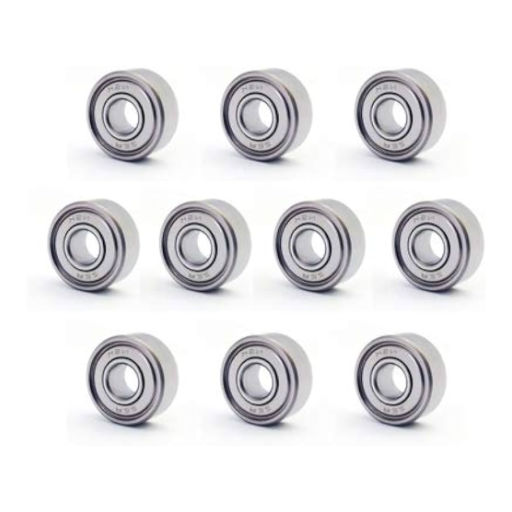
Understanding Metal Shields and Their Benefits
Metal shields are protective, thin, and sturdy disks made of steel or other similar materials that cover the internal part of a bearing and permit some interaction with the environment. Metal shields are affixed to the outer rotation of the bearing, so a small gap is maintained, allowing for unrestricted rotation. Unlike sealed bearings, metal-shielded bearings allow enclosure, which facilitates heat to escape, which improves other rotational factors.
One of the most significant advantages of metal shielding is its ability to protect rotating parts of the bearing from coarse pollutants such as dust without interfering with the optimum performance of the bearing. This is useful in russian environments where the large dust particles are gentler than finer particles and liquids. Furthermore, a significant difference of metal shielding is lower operating temperature when compared to radial bearings while maintaining the same level of metal shielding. The metal shielding without radial bearing optimizes temperature, which improves the life of the lubricant and slows the tear of the internal system.
As an illustration, regarding industrial machinery that utilizes equipment with considerable RPM requirements, studies show that metal-shielded bearings possess an operational durability increase of up to 15% over unshielded configurations, depending on the working conditions. This assists in deciding on equipment that requires speed and efficiency while offering periodic maintenance. Assesing the context of the operating environment including the contaminants, temperature, and centrifugal speed is very important for making the decision on design of shielded bearing design to use.
Advantages of Rubber-Sealed Bearings
Rubber sealed bearings perform particularly well in tough operational conditions. The most significant feature of these bearings is their ability to block the entry of contaminants like dust, dirt, and water which can compromise the internal parts of the bearing and shorten its life. This type of bearing also minimizes the frequency of maintenance required because the rubber seals retain lubrication effectively, thus prolonging maintenance intervals.
Evidence suggests that rubber-sealed bearings are highly effective in case there is increased exposure to severe working conditions, for example, in mining, agricultural machinery, and chemical processing units. These bearings provide better protection against the entry of water and chemicals, which leads to reduced corrosion as compared to unsealed or shielded configurations. Also, the robust construction of these bearings leads to considerably lower heat generation during their operation, energy consumption, and maintenance performance tolerance,s ensuring precise functionality.
Seal designs offer greater reliability and consistency in places that have extreme temperature fluctuation. The operating temperature rating for the unspecialized designs reaches up to 250°F (121°C), indicating versatility across a wide array of industrial applications. The use of these bearings leads to a reduction in unscheduled downtime while extending the overall life of machinery, which proves to be economically advantageous in long-term operations.
Choosing Between Shielded and Sealed Options
The choice between shielded or sealed options depends on the operational setup, performance levels, and maintenance requirements of the specific equipment. Shielded designs, for instance, allow for some airflow and heat dissipation while protecting components from larger debris or moderate contamination. These are suitable for systems in clean environments that have easy maintenance scheduling.
Sealed options, however, excel in harsh environments that are prone to fine particulates, moisture, or chemical ingress. With enclosed structures, sealed options are well protected from many contaminants, thus increasing overall durability and decreasing chances of premature failures. An example lies in sealed bearings used for industrial applications. These bearings endure constant exposure to corrosive substances or abrasive materials without degrading. Furthermore, modern materials and sealing technologies have advanced in constructing low-friction filters that provide powerful protection.
Through comparison, it can be noticed that sealed systems, more expensive upfront, usually have a lower total cost in the long run. This is due to the decreased need for maintenance, infrequent replacements, and reduced downtime. On the other hand, shielded systems are cheaper and simpler, making them more cost-effective for applications with controlled conditions.
Frequently Asked Questions (FAQs)
Q: What are miniature ball bearings?
A: Miniature ball bearings are small ball bearings designed for applications requiring high precision and exceptional performance. They often feature steel balls and are available in a variety of sizes and designs, such as deep groove ball bearings and radial miniature ball bearings.
Q: How is the size of a miniature ball bearing specified?
A: The size of a miniature ball bearing is typically specified in metric units, including the inner diameter, outer diameter (OD), and width, often measured in millimeters (mm). For example, a common size might be 7mm or 22mm.
Q: What materials are used in the construction of miniature ball bearings?
A: Miniature ball bearings are usually made from high-quality materials, such as steel, for the balls and races. Variations can include nylon or other materials for cages, and finishes may use light oil or grease for lubrication.
Q: What are deep groove ball bearings?
A: Deep groove ball bearings are a type of miniature ball bearing known for their ability to handle radial and axial loads. They feature a deep raceway that enhances load capacity and are widely used in precision miniature applications.
Q: Can you explain the importance of a flange in miniature ball bearings?
A: A flange in miniature ball bearings provides a mounting surface that helps in the precise positioning of the bearing in an assembly. This feature is particularly useful in applications requiring tight dimensional tolerances.
Q: What are the typical applications of miniature ball bearings?
A: Miniature ball bearings are used in a wide range of applications, including medical devices, flow meters, small motors, and precision instruments. Their small size and high performance make them ideal for use in micro and compact assemblies.
Q: What is the significance of a single-row design in miniature ball bearings?
A: Single-row miniature ball bearings have a single row of steel balls, providing a balance between load capacity and size. They are often used where space is limited and are known for their smooth operation and high precision.
Q: How can variations in miniature ball bearings impact their performance?
A: Variations in design, such as the use of crown cages or extended inner rings, can impact the load capacity, speed, and overall performance of the bearings. Proper selection from a manufacturer’s catalog ensures optimal performance for specific applications.
UCTH213-40J-300 with Setscrew(inch)
CNSORDERNO: Normal-duty(2)
TOGN: UCTH213-40J-300
SDI: B-R1/8
SD: 2 1/2
UCTH212-39J-300 with Setscrew(inch)
CNSORDERNO: Normal-duty(2)
TOGN: UCTH212-39J-300
SDI: B-R1/8
SD: 2 7/16
UCTH212-38J-300 with Setscrew(inch)
CNSORDERNO: Normal-duty(2)
TOGN: UCTH212-38J-300
SDI: B-R1/8
SD: 2 3/8
UCTH212-36J-300 with Setscrew(inch)
CNSORDERNO: Normal-duty(2)
TOGN: UCTH212-36J-300
SDI: B-R1/8
SD: 2 1/4
UCTH211-35J-300 with Setscrew(inch)
CNSORDERNO: Normal-duty(2)
TOGN: UCTH211-35J-300
SDI: B-R1/8
SD: 2 3/16
UCTH211-34J-300 with Setscrew(inch)
CNSORDERNO: Normal-duty(2)
TOGN: UCTH211-34J-300
SDI: B-R1/8
SD: 2 1/8










